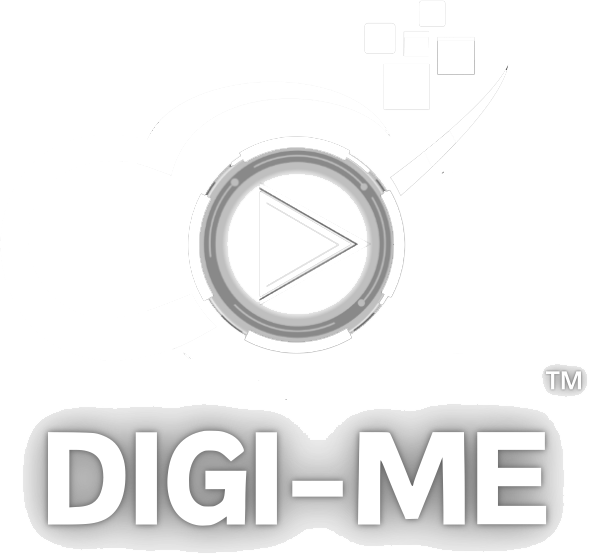In today’s fast-paced world, organizations are shifting their hiring methods to keep up with technological advancements. Transitioning from traditional to digital hiring practices offers numerous benefits, including increased efficiency and broader reach. By adopting digital tools, companies can streamline their recruitment process, enhance the candidate experience, and make more informed decisions. This shift saves time and resources and helps attract top talent in a competitive market. Adapting to digital hiring can significantly improve your overall recruitment strategy, whether you’re a small business or a large enterprise.
Assess Your Current Hiring Process
Start by evaluating your existing hiring methods to identify what works and doesn’t. Look for strengths such as effective interview techniques or strong employer branding. Recognize weaknesses like lengthy application processes or poor candidate communication. Next, decide which parts of your process can be digitized, such as using software for resume screening or scheduling interviews online.
Focus on areas that will most benefit from technology to improve efficiency. Finally, set clear and measurable goals for the transition. Define what success looks like, whether it’s reducing the time to hire or increasing the quality of candidates. A thorough assessment ensures a focused and effective shift to digital hiring practices.
Leverage Technology for Streamlined Recruitment
Adopting modern technology can significantly enhance your recruitment process. Implementing an Applicant Tracking System (ATS) helps organize and manage candidates efficiently, reducing manual paperwork. You can use AI for resume screening, accelerating the identification of qualified candidates by quickly analyzing key qualifications and experiences.
Additionally, automating scheduling and communication saves time and minimizes errors by coordinating interviews and sending timely updates to applicants. These technological tools speed up the hiring process and improve accuracy and consistency. Integrating these solutions allows your HR team to focus more on building relationships with potential hires and less on administrative tasks, ultimately leading to a more effective recruitment strategy.
Enhance Candidate Experience Digitally
Creating a user-friendly application portal is essential for attracting top talent. A well-designed portal makes it easy for candidates to submit their information and track their application status. Virtual interviews and assessments allow flexibility, enabling candidates to participate from any location. This approach broadens your reach and accommodates diverse schedules. Providing timely feedback through digital platforms keeps candidates informed and engaged throughout the hiring process. Quick responses demonstrate respect for their time and effort, enhancing their overall experience.
At the same time, offering clear instructions and support via online resources can reduce confusion and improve satisfaction. Focusing on these digital enhancements ensures a positive and efficient journey for every applicant.
Train Your Team for Digital Hiring
Offering training sessions on new tools and technologies is the first step. With this in mind, organize workshops and hands-on training to build proficiency. Furthermore, it encourages continuous learning and adaptation by providing access to online courses and resources. Create a supportive environment where team members feel comfortable exploring new methods. Foster a culture open to digital transformation by promoting collaboration and innovation.
Similarly, it recognizes and rewards efforts to adopt and utilize digital hiring practices. Hence, ensure your team stays updated with the latest trends and advancements. Leadership should demonstrate commitment to digital hiring, inspiring the team to embrace change. A well-trained team is essential for a successful transition.
Integrate Digital Tools Seamlessly
Integrating digital tools into business operations necessitates meticulous planning and execution to avoid technical setbacks. Ensuring software compatibility is critical to preventing system conflicts. Moreover, leveraging APIs can facilitate smooth data exchange between platforms, boosting functionality. Establishing standardized data formats is also crucial for maintaining uniformity across tools.
Before rolling out integrations, comprehensive testing is essential to identify and address any potential issues. Involving your IT team in this phase ensures that all technical aspects are thoroughly evaluated. Additionally, gathering user feedback can help refine the integration process and enhance user satisfaction. Documenting the integration steps is also beneficial for future reference and troubleshooting.
Digital integration is transforming various sectors, including human resources, healthcare, finance, and the moving industry. For instance, in the moving industry, companies can use platforms like Movers Development, which provides specialized solutions to enhance business operations, including digital hiring practices. These tools streamline the transition from traditional methods to digital processes, improving productivity and supporting successful hiring strategies.
By adopting well-integrated systems, businesses from different sectors can enhance operational efficiency and adapt to the increasingly digital landscape.
Utilize Data Analytics in Hiring
Tracking key recruitment metrics is essential for understanding your hiring process. Metrics such as time-to-hire, source of hire, and candidate quality provide valuable information. Analyzing this data helps identify patterns and areas for improvement in your strategies. For instance, data can reveal which recruitment channels yield the best candidates or where bottlenecks occur.
Similarly, leveraging analytics allows you to make informed decisions, optimizing your efforts to attract and retain top talent. Using data-driven insights enhances the efficiency and effectiveness of your hiring practices. Integrating data analytics into your recruitment process ultimately leads to better outcomes and a stronger workforce.
Ensure Security and Compliance Online
Maintaining security and compliance is vital when transitioning to digital hiring practices. Protecting candidate data involves several robust security measures:
-
Data Encryption: Safeguard information during transmission and storage.
-
Access Controls: Restrict data access to authorized personnel only.
-
Regular Audits: Conduct frequent security assessments to identify vulnerabilities.
-
Secure Backup: Ensure data is backed up safely to prevent loss.
Staying updated with digital hiring regulations helps avoid legal issues. Implementing compliance checks within your systems guarantees that your hiring processes adhere to current laws and standards. Regularly review and update your policies to reflect any changes in regulations. This proactive approach protects your organization and builds trust with candidates.
Scale Your Hiring Efforts with Digital Solutions
Transitioning from traditional to digital hiring practices enables your company to reach a broader audience. Utilizing digital platforms helps access a wider talent pool, attracting candidates from diverse backgrounds. Incorporating VideoJobs can enhance your employer brand and engage candidates more effectively. Automating repetitive tasks like screening resumes and scheduling interviews saves valuable time. This efficiency allows your team to focus on more strategic activities.
As your company grows, adapting your hiring strategies becomes essential. Digital solutions provide the flexibility to scale operations, accommodating increased recruitment needs without compromising quality. Continuously evaluate and refine your approaches to align with your evolving business goals. This proactive strategy supports sustained growth and effective talent acquisition.
Mastering Transitioning from Traditional to Digital Hiring Practices
Creating a detailed transition plan is essential for success. Outline each step, assign responsibilities, and set clear timelines to guide the process. Next, monitor progress consistently to identify what’s effective and needs adjustment. Use metrics and feedback to refine your strategies continuously.
In addition, celebrating milestones helps maintain team motivation and acknowledges their efforts. Recognizing achievements keeps the team engaged and committed to the transformation. Open communication throughout the transition fosters collaboration and addresses challenges promptly. This structured approach ensures that the shift is effective and sustainable, leading to long-term benefits for your organization.
Conclusion
Transitioning from traditional to digital hiring practices transforms your recruitment process, making it more efficient and effective. Adopting digital tools allows you to reach a wider talent pool, streamline operations, and enhance the candidate experience. Leveraging technology and data analytics enables informed hiring decisions aligning with organizational goals. Training your team and maintaining security and compliance further support a successful transition. Implementing these strategies saves time and resources. It also positions your company competitively in the talent market. Additionally, a digital approach fosters greater flexibility and adaptability, which is essential for today’s evolving business landscape. This shift helps build a stronger, more dynamic workforce, ensuring long-term success.







